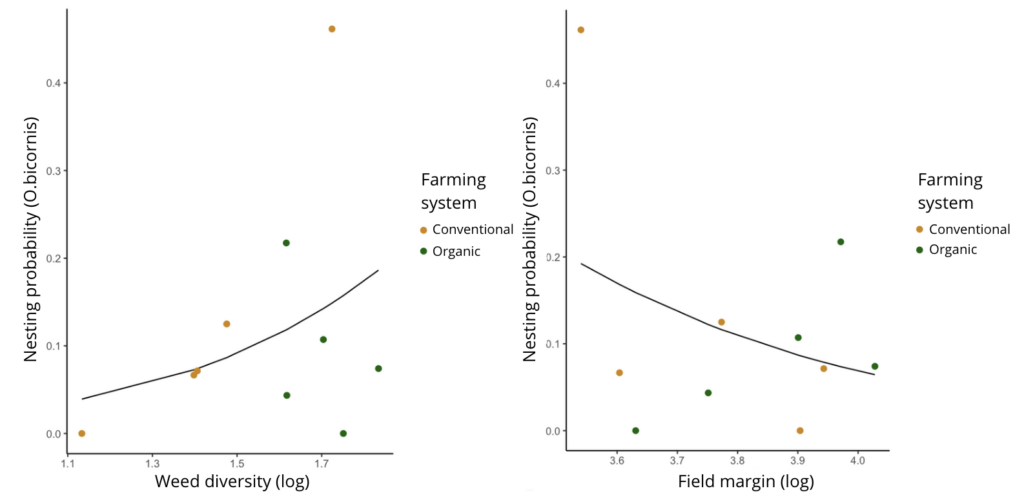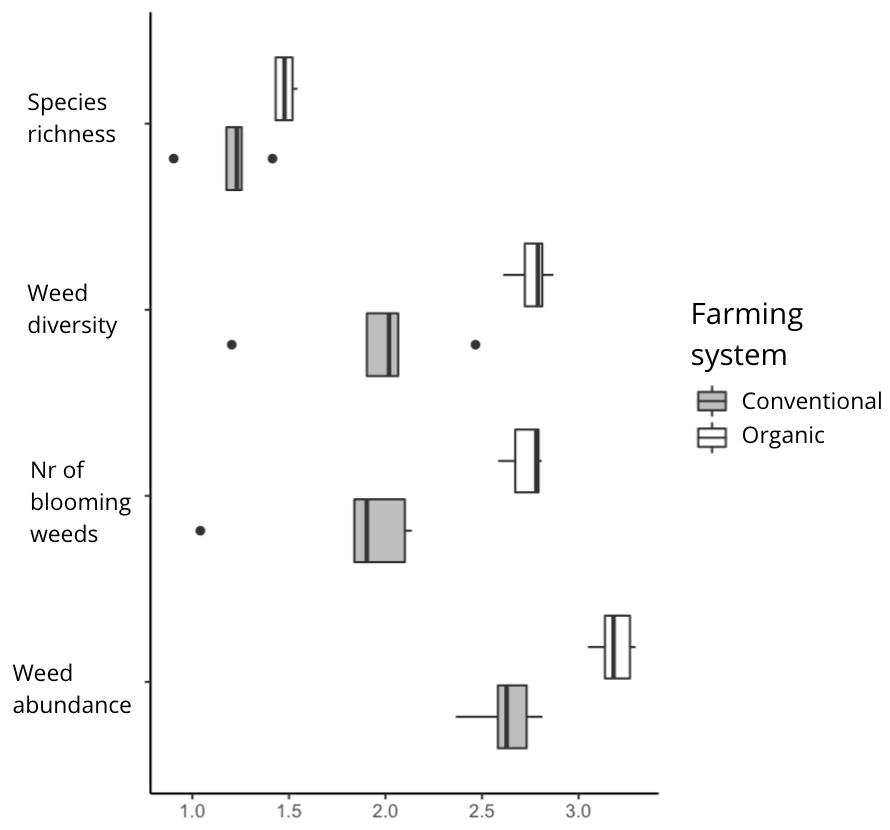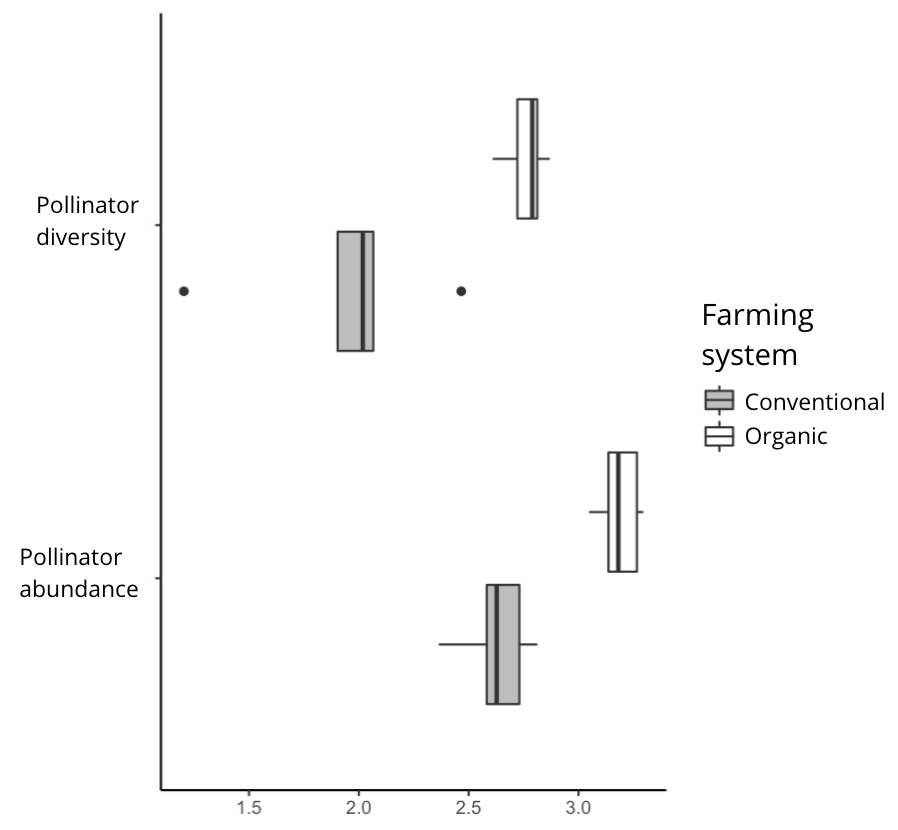Results indicate that none of the explanatory variables, including weed abundance, diversity, and the number of blooming plants, as well as pollinator abundance and diversity, and arable land cover and length of field margins, had any effect on the reproductive success of O. bicornis.
O. bicornis exhibits a preference for nesting in cereal fields that exhibit high weed diversity while demonstrating reluctance to nest in cereal fields with long field margins. Field margins are semi-natural habitats that contain flower resources and nesting material for bees. It is known that O. bicornis nests in habitats with a higher flower abundance and therefore, could cereal fields and field margins be competitive habitats.

Fields with organic farming systems exhibited a higher species richness of weeds, as well as a higher Shannon diversity of weeds, a greater number of blooming weeds, and a higher abundance of weeds compared to fields under conventional farming systems.

Fields with organic farming systems also had a higher abundance of pollinators and a higher diversity of pollinators than fields with conventional farming systems.
